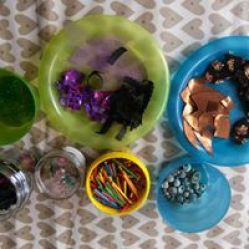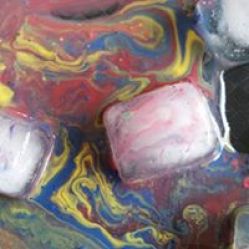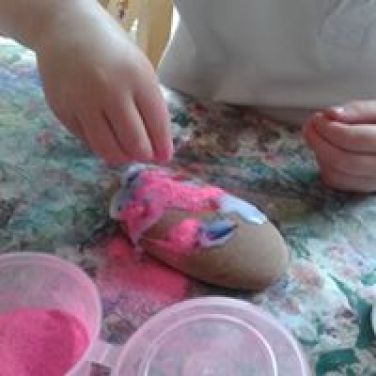I have a background of being an Occupational Therapist for over 13 years, therefore I am very aware of the benefits art has to your health and well-being. So, this is why I am passionate about children engaging in art. I want them to have a positive experience of participating in art at a young age so hopefully they will continue to engage in art as they grow older and gain the health benefits throughout their life.
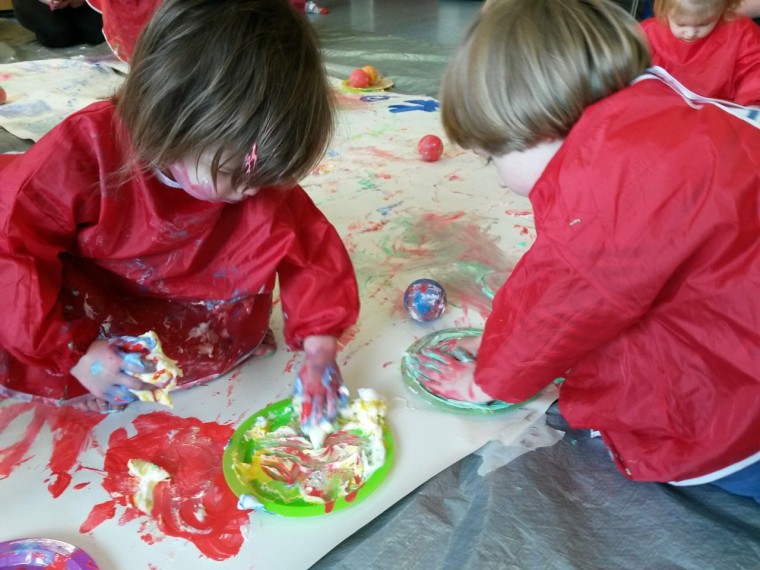
Photo from Ruth’s Arty Experience preschool workshop
Sadly, the current education system seems not to prioritize art in its true value. It is often being made part of another subject and not a wonderful subject in its own right. I can’t help but think that this maybe adding to the many reasons why our young people are experiencing more mental health problems than ever before.
The benefits of art on your health and well-being are widely recognized. It is used to help people being restored back to full health and I’m sure a lot of us have experienced how art has helped us through a tough period in our lives. In my late teens, I had to stay in hospital for over 2 weeks lying on my back…there wasn’t much I could do but I managed to do something as simple as draw and it took me ‘out’ of my situation of pain, isolation and boredom into a ‘place’ where time went quickly, where my mind was totally absorbed in something positive. I was proud of the artwork I produced – this in turn helped lift my spirits at a very difficult time.

Drawing from my time in hospital
Much of the literature on creative activities reveal several common benefits that affect health and well-being; to aid communication and expressions, to give pleasure, to increase self-esteem and to improve the ability to perform tasks. According to the Carnegie council review (1988) people find producing art and crafts can be an outlet to express inner thoughts, feelings and beliefs. Creek (1997) recognizes self-expression through creative activities allow a person to express happy or painful feelings in a sociably acceptable way, which otherwise might seem overwhelming.
Since becoming a mother of 2 children I have come to love process art, especially to engage children of all ages. Doing art with children is freer and more enjoyable when it’s about getting messy and having fun. It’s great to focus less on what it will look like or ‘should’ look like but more on enjoying the process instead. This approach allows children to be truly creative, free to express themselves; nurturing their creativity and themselves as an individual.
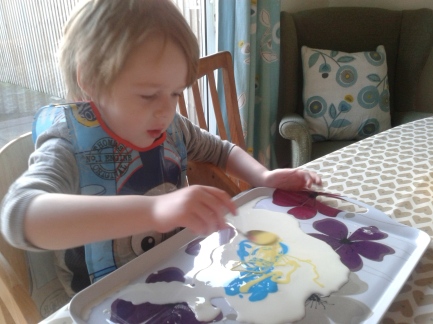
Photo: Process art at home
Bailey (1997) found people take delight in learning and doing something new. Through this, hidden talents are discovered and can heighten an individual’s sense of identity and increases their self-worth (Carnegie Council Review, 1988). Hyslop (1993) outlines the benefits of creative activities to re-affirm a person’s sense of self-worth, maintain their individual identity and maintain a sense of pride.
References
Bailey S S (1997) The Arts in Spiritual Care. Seminars in Oncology Nursing, 13(4), 242-247.
Carnegie council review (1988) After Attenborough. Arts and Disabled People. London: Bedford Square
Creek J (ed) (1997) Occupational Therapy and Mental Health. Singapore: Longman Singapore Publishers Ltd.
Hyslop S (1993) The use of clay as part of ‘healing’ in palliative care. Journal of Cancer Care, 2, 68-74.



 You will need:
You will need:

